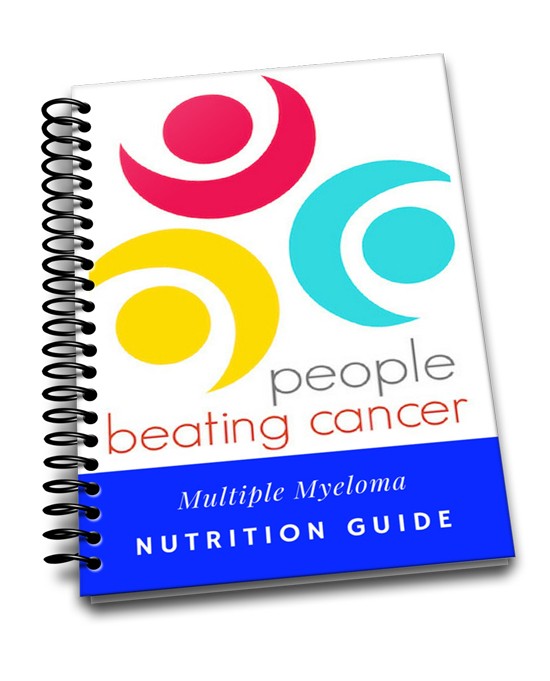Leave a Comment:
1 comment
[…] Surviving Multiple Myeloma. Life After Therapy […]
Reply
Multiple Myeloma an incurable disease, but I have spent the last 25 years in remission using a blend of conventional oncology and evidence-based nutrition, supplementation, and lifestyle therapies from peer-reviewed studies that your oncologist probably hasn't told you about.
Click the orange button to the right to learn more about what you can start doing today.

You’ve been diagnosed with multiple myeloma (MM). You’ve lived through induction therapy and maybe lived through a stem cell transplant. You’ve achieved a multiple myeloma remission…phew…Now you’re facing what is often referred to as “the new normal.”
Multiple Myeloma, according to your oncologist, is incurable. Writing a blog post about life after conventional treatment, to me anyway, is as important as writing a blog post about the therapy itself.
I don’t think that MM has to be incurable. Why? Because I was first diagnosed with multiple myeloma in 1994 and I have been in complete remission from my incurable cancer since 1999. I live an anti-MM lifestyle. I think that MM survivors need a plan.
The Washington Post article linked and excerpted below talks about how cancer patients are told what to do, generally, once their active therapy ends. Multiple Myeloma survivors are told “to mind their lifestyle: lace up their sneakers, eat healthy, watch their weight and avoid tobacco and excess alcohol.” This is not enough of a plan. Not nearly enough in my experience.
When I was diagnosed in 1994, conventional chemo and radiation led to 2 remissions, 2 relapses and terminal or end stage status. Now I live an evidence-based anti-MM lifestyle. Nutrition, supplementation, lifestyle, bone health, even mind-body therapies. All therapies supported by research.
My point is that in my experience, evidence-based but non-conventional, non-t0xic therapies are just as important to the MM survivor as standard-of-care therapies are.
Consider:
Consider:
In other words, the new normal is about managing both your mind and your body once you’ve reached remission post induction and/or a stem cell transplant.
To learn more about the above therapies and more, scroll down the page, post a question or comment and I will reply to you ASAP.
Hang in there,
David Emerson
“Cancer patients used to be told to go home and take care of themselves without too many specifics for life after treatment. Now, as soon as they’re feeling strong enough, they’re advised to mind their lifestyle: lace up their sneakers, eat healthy, watch their weight and avoid tobacco and excess alcohol…
Healthy behaviors may be especially important for someone who has had (multiple myeloma) cancer. “They can not only be potentially helpful in preventing cancer from being there in the first place, but . . . they may be powerful tools in preventing recurrence,” said Jennifer Ligibel, a senior physician at Dana-Farber Cancer Institute in Boston. “We’re hoping that these types of things can improve survival rates in people who’ve had early cancers…”
Cancer survivors often need a tailored lifestyle program because side effects from their treatments can make it harder for them even to put on their shoes and go outside, Ligibel said…
While advances in battling cancer have grabbed the spotlight, post-treatment life has gotten much less attention, as detailed more than a decade ago in an Institute of Medicine report called “From Cancer Patient to Cancer Survivor: Lost in Transition.” A patient who turns into a survivor faces many challenges: physical and psychological effects of treatment, including fatigue, numbness, pain and anxiety; and additional disease. Some effects can appear months or years later.
Survivors also live with the possibility of a recurrence or of developing a different form of cancer. Nearly 1 in 5 cancers are a second diagnosis, according to the National Cancer Institute…”
[…] Surviving Multiple Myeloma. Life After Therapy […]
Reply